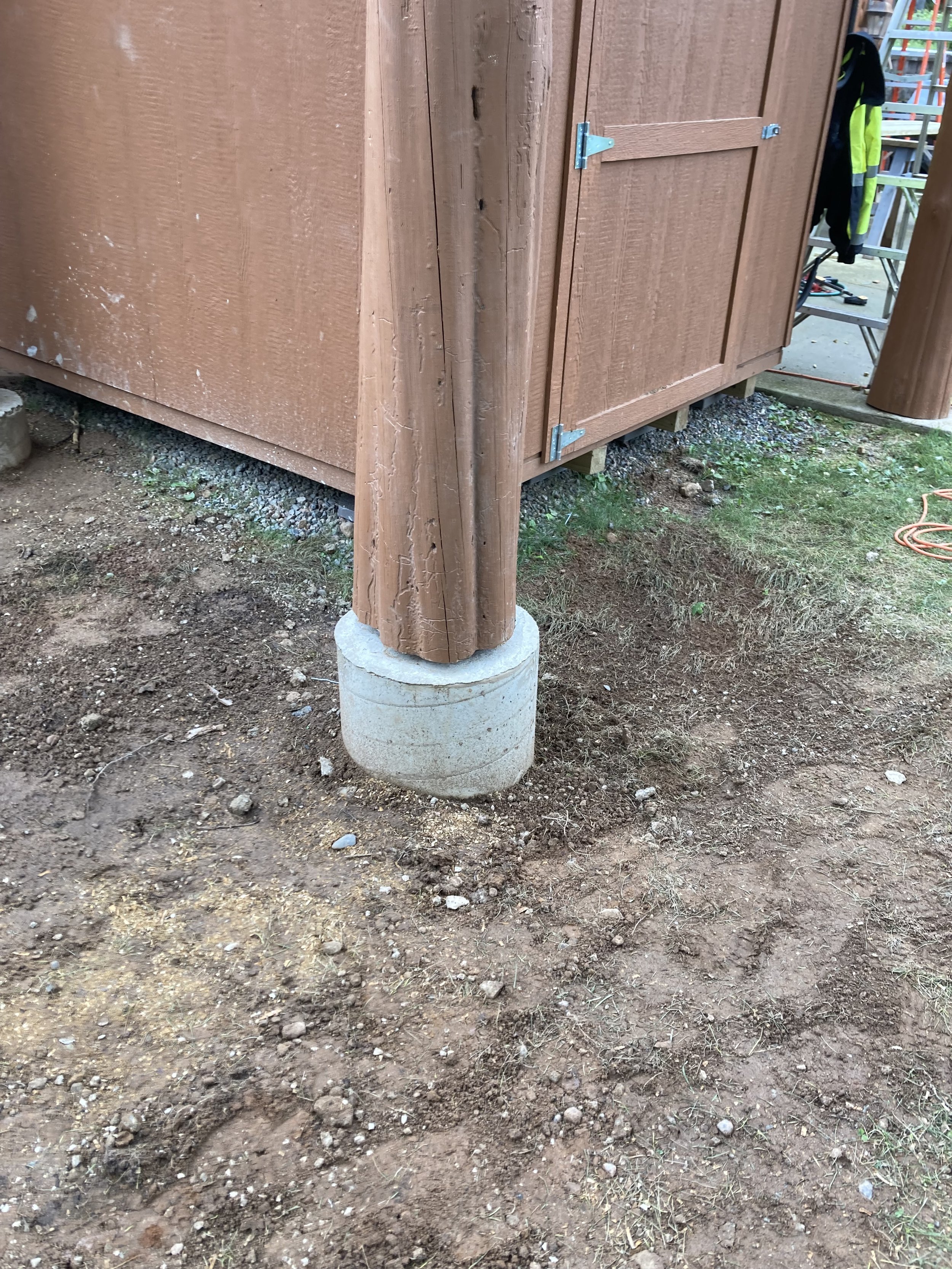The Crucial Role of Footings: Why Deck Posts Should Never Rest Directly on the Ground
Building a deck is an exciting endeavor that transforms outdoor spaces into functional and aesthetically pleasing areas. Among the many considerations in deck construction, one critical aspect often overlooked is the foundation support provided by footings. In this article, we will explore why it is paramount for deck posts to rest on footings rather than directly on the ground.
1. Structural Stability:
Deck footings serve as the anchor points that support the weight of the entire deck structure, including decking, furniture, and occupants. Placing deck posts directly on the ground exposes them to moisture, which can lead to rot and decay over time. Footings, on the other hand, provide a stable and elevated platform, safeguarding against ground-level moisture and enhancing the structural integrity of the entire deck. A proper footing is shown below.
2. Preventing Ground-Related Issues:
When deck posts come into direct contact with the ground, they are vulnerable to various ground-related issues, such as settling, shifting, or heaving due to soil movement. Footings act as a barrier, preventing direct interaction with the soil and minimizing the risk of these issues. This ensures a more secure and durable foundation for the entire deck structure.
3. Mitigating Moisture Damage:
Moisture is one of the primary adversaries of wooden structures. When deck posts rest directly on the ground, they become susceptible to moisture absorption, leading to wood decay, insect infestations, and fungal growth. Footings elevate the posts above ground level, reducing the likelihood of moisture-related damage and prolonging the life of the deck.
4. Code Compliance:
Building codes and regulations play a crucial role in ensuring the safety and longevity of structures. Many building codes explicitly require the use of footings to support deck posts. Adhering to these codes not only ensures compliance but also guarantees that the deck is built to withstand the various environmental challenges it may face over time.
5. Enhanced Load Distribution:
Footings distribute the load of the deck posts more evenly across a wider area, reducing the pressure exerted on the soil. This even load distribution minimizes the risk of uneven settling or shifting of the deck structure. It also ensures that the deck remains level and stable, providing a safe and enjoyable outdoor space.
6. Ease of Inspection and Maintenance:
Elevating deck posts with footings not only enhances their longevity but also facilitates easier inspection and maintenance. Accessing posts for regular checks and maintenance becomes simpler when they are raised above ground level, allowing homeowners to address any issues promptly and avoid costly repairs in the long run.
In the world of deck construction, the significance of proper foundation support cannot be overstated. Deck posts resting directly on the ground are exposed to a myriad of challenges that compromise their stability and lifespan. Utilizing footings ensures structural stability, mitigates moisture damage, complies with building codes, and facilitates easier maintenance. By prioritizing the use of footings in deck construction, homeowners and builders can create outdoor spaces that not only look beautiful but also stand the test of time with resilience and durability.

